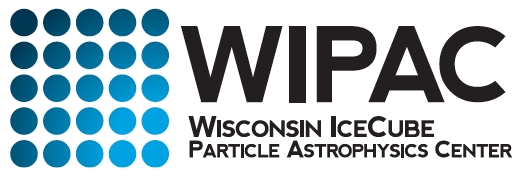

Astrophysics in the Classroom
A workshop for high school teachers
· 9:00 - 9:50 Introduction to astrophysics research at WIPAC
WIPAC is the leading institution of the IceCube Neutrino Observatory , the largest and strangest neutrino detector ever built. This cubic-kilometer detector buried in the Antarctic ice has observed the first very high energy neutrinos coming from beyond our solar system. Researchers at WIPAC also work on a cosmic ray detector in Mexico, HAWC , and are working on the design and/or construction of future experiments like ARA and CTA . During this session you will learn how physicists and astronomers use particles such as neutrinos, cosmic rays or gamma rays to explore the most extreme environments in our universe, like supernovas, gamma-ray bursts or black holes.
· 10:15 - 12:00 Introduction to IceCube research in the classroom
WIPAC’s education and outreach team has been working on several projects and activities that can be used to introduce cutting-edge science in the classroom. Recently, they have developed educational resources for the first IceCube Masterclass, which will be shared during this session. These activities could be further adapted or expanded to fit a more standard classroom activity. Opportunities for teachers and students to talk and interact with WIPAC researchers will also be shared, such as webcasts with the South Pole, internships for students, the 2015 IceCube Masterclass, and also talks or hand-on activities tailored for your school.
· 13:00 - 13:45 Upward Bound program at River Falls: best practices
The Upward Bound summer program at UW-River Falls provides opportunities for high school students from low-income families, whose parents didn't attend college, to help them succeed in higher education. Students are guided through a problem-solving activity from a specific topic, which the students usually have some familiarity with, to methods and knowledge of current research in astrophysics. The example presented in this session uses a narrative arc to go from concrete tangible activities to more abstract, representational ideas. We will look at how to interpret contour plots that show projections of 3-D data onto 2-D surfaces. These types of plots are commonly seen in weather reports but are also widely used in particle astrophysics.
· 13:45 - 14:30 PolarTREC program: opportunities and best practices
The NSF funded PolarTREC program is designed to invigorate polar science education and understanding by bringing K-12 educators and polar researchers together. Each year, several K-12 teachers spend 3-6 weeks participating in hands-on field research experiences in the polar regions. IceCube hosts a teacher at the South Pole every year. Juan Botella, a physics teacher at Monona Grove High School in Monona, was a PolarTREC teacher a few years ago and has also participated in a new NSF program to send some students to Antarctica. He will share his experience both from the teacher’s and the students’ perspective.
· 15:00 – 15:45 Quarknet activities and opportunities
QuarkNet is a national program in particle physics and teacher professional development. It offers unique opportunities for teachers and their students. We'll discuss how you can participate as well as go over what you need to be in the system to take advantage of these opportunities.
· 15:45 - 16:30 Building a cosmic-ray detector with cell phones
DECO is a cosmic-ray detector app that runs on Android OS. It allows anyone with a cell phone to detect cosmic rays and share data with peers anywhere in the world. In this session, we will explain how to use cell phones to create a real cosmic-ray experiment in the classroom and to analyze data in a collaborative way.
· 16:30 - 17:00 Open discussion
We will conclude with a discussion about how to increase connections between research at WIPAC and science activities in high schools.